Centri abbandonati in Sicilia: Strategie e iniziative per il recupero e la valorizzazione
Abstract
Il presente contributo intende tracciare un bilancio sulle strategie poste in essere, negli ultimi cinquant’anni, per contrastare il fenomeno dello spopolamento dei centri storici siciliani –specie quelli ricadenti nelle aree interne- e per incentivarne il recupero, nelle loro configurazioni fisiche e monumentali, e nelle loro capacità di assicurare una ‘qualità della vita’. La evidente constatazione di una operatività reale molto limitata, è attribuibile a molte cause, due fra le altre la mancanza di una coscienza collettiva in grado di percepire la cosa pubblica e afflitta peraltro da una endemica carenza di capacità imprenditoriale che ha favorito uno sviluppo dell’autonomia caratterizzato da vittimismo e pretesa risarcitoria piuttosto che strumento di crescita delle comunità locali e la mancata convergenza della pianificazione urbanistica e culturale che, volta per volta, hanno originato provvedimenti normativi slegati tra loro e quindi non efficaci. Il ritardo di sviluppo in Sicilia ha però paradossalmente consentito il mantenimento di una situazione di non irreversibile trasformazione dei luoghi e pertanto una programmazione intelligente con strategie territoriali finalizzate a contrastare i fenomeni di spopolamento effettivamente in atto, in un contesto culturale ormai più consapevole, potrebbe ancora assicurare un futuro diverso.
Abandoned Small Towns in Sicily. Strategies and Proposals for Recovering and Enhancement
The present contribution focuses on the strategies carried out to hinder depopulation and to facilitate the recovery of the historical city centers in Sicily in the last fifty years. In particular, the essay analyses if the strategies and the initiatives fostered in this field had been respectful of the physical characteristics of these small towns. Furthermore, the present study intends to assess if the improvement of the “quality of life” has been taken into consideration among the strategies carried out to contrast depopulation.The scarce efficacy of policies and strategies over the last fifty years, which emerges from this analyses, is partially due to the endemic inability of politicians and local communities in looking at these sites as cultural and economic resources. Scarce entrepreneurial capacities, and, on the other side, a strong victim complex which characterize Sicilian people are two of the many reasons for the failure of such strategies. The political autonomy of the Region has been influenced by this attitude of the community and it has not be seen, over time, as an opportunity for a political, economic and cultural growth of the island. To worsen such a pessimistic frame, the inability in coordinating programs and strategies for urban and territorial planning have to be underlined.Paradoxically, the delay in the development of strategies and policies for urban planning, involved a quite good preservation of historical city centers, mainly in the inner areas of the region. For this reason, smart and coordinated strategies for the management of urban and territorial transformations, in a cultural context which has now been changing, could carry out significant results for a better future.
Parole chiave
Full Text
PDFDOI: https://doi.org/10.14633/AHR286
Refback
- Non ci sono refbacks, per ora.
Copyright (c) 2020 Renata Prescia

This work is licensed under a Creative Commons Attribution-NonCommercial 4.0 International License.
........................................................................................................................................................................................................................................................................................................................................................
ArcHistoR è una rivista open access e peer reviewed (double blind), di Storia dell’architettura e Restauro, pubblicata con cadenza semestrale dall'Università Mediterranea di Reggio Calabria (Laboratorio CROSS - Storia dell'architettura e Restauro, dAeD - Dipartimento di Architettura e Design).
ISSN 2384-8898
![]()

Comitato scientifico internazionale
Maria Dolores Antigüedad del Castillo-Olivares, Monica Butzek, Jean-François Cabestan, Alicia Cámara Muñoz, David Friedman, Alexandre Gady, Jörg Garms, Miles Glenndinning, Mark Wilson Jones, Loughlin Kealy, Paulo Lourenço, David Marshall, Werner Oechslin, José Luis Sancho, Dmitrij O. Švidkovskij
Comitato direttivo
Tommaso Manfredi (direttore responsabile), Giuseppina Scamardì (direttrice editoriale), Antonello Alici, Salvatore Di Liello, Fabrizio Di Marco, Paolo Faccio, Mariacristina Giambruno, Bruno Mussari, Annunziata Maria Oteri, Francesca Passalacqua, Edoardo Piccoli, Renata Prescia, Nino Sulfaro, Fabio Todesco, Guglielmo Villa
 .
. 


2.jpg)
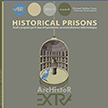

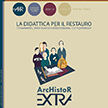

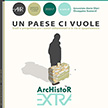
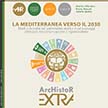
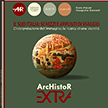

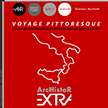
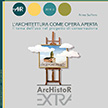

_2.jpg) .
. 
 .
. 

